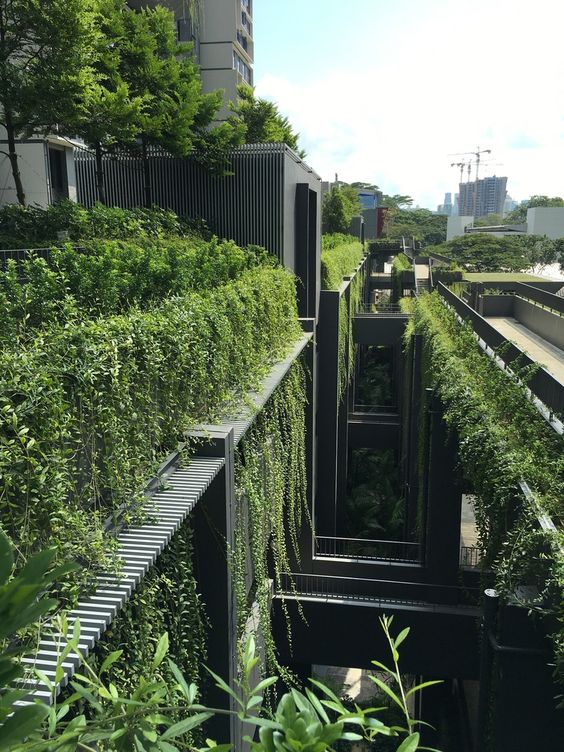
LEED, WELL and Green Building Consulting available for Residential, Neighborhoods, Offices and Developments for future projects or to bring up currently existing spaces to LEED or WELL Building standards.
For existing structures, ask us about re-entry standards for Covid, bringing your property or large portfolio current and how to garner the coveted LEED Certified or WELL Certified standard, which provides the highest standard in sustainability and wellness for the built environment and can help to market your property with an elite group of owners who can offer LEED and WELL level standards for their properties, which give consumers an extra measure of comfort, safety and health afforded only by being LEED or WELL accredited.
LEED (Leadership in Energy and Environmental Design) is the most widely used green building rating system in the world. Available for virtually all building types, LEED provides a framework for healthy, highly efficient, and cost-saving green buildings. LEED certification is a globally recognized symbol of sustainability achievement and leadership.
Millions of people are living, working and learning in LEED-certified buildings around the world. Here's why.

Gain a competitive edge
61% of corporate leaders believe that sustainability leads to market differentiation and improved financial performance.
Attract tenants
LEED-certified buildings command the highest rents, while lease-up rates typically range from average to 20% above average; vacancy rates for green buildings are an estimated 4% lower than non-green properties.
Manage performance
LEED is the world leading green building project and performance management system. It delivers a comprehensive framework for green building design, construction, operations and performance
LEED Safety First pilot credits
As part of its Healthy Economy strategy, USGBC has six LEED pilot credits to help building teams provide healthy spaces, and to assist with re-entry. The pilot credits outline sustainable best practices that align with public health and industry guidelines related to cleaning and disinfecting, workplace re-occupancy, HVAC and plumbing operations. The credits can be used by LEED projects that are certified or are undergoing certification.
Meet ESG goals
LEED helps investors meet their ESG goals by providing investors with the robust and globally recognized green building framework to measure and manage their real estate performance. LEED helps investors implement management practices to prioritize building efficiency, decrease operational costs, increase asset value and ensure productivity, comfort, health and wellbeing for occupants.
Cost Effective
$1.2 billion
in energy savings*
$149.5 million
in water savings*
$715.3 million
in maintenance savings*
$54.2 million
in waste savings*
*Estimate from LEED-certified buildings from 2015-2018
Health benefits: Stay healthy with LEED
Happier employees, happier occupants
Employers in LEED-certified spaces report higher recruitment and retention rates, and increased employee productivity.
Bringing in the good and keeping out the bad
LEED creates healthier spaces with cleaner air, access to daylight, and free from harmful chemicals found in paints and finishings.
Indoor environmental quality
Improving indoor air quality can reduce absenteeism and work hours affected by asthma, respiratory allergies, depression and stress, and leads to and self-reported improvements in productivity.
Reduced pollution
Energy-efficient buildings help reduce pollution and improve outdoor air quality in major industrialized areas, making LEED a critical tool in reducing smog.
Environmental benefits: Help the environment and reduce carbon with LEED
Reduced energy use and carbon emissions
34%
lower CO2 emissions*
25%
less energy consumed*
11%
less water consumed*
80 million
tons of waste diverted from landfills*
89/100
average ENERGY STAR score for LEED projects
25%
less energy on average used by LEED buildings compared to commercial buildings
1.3 million
tons of coal equivalent saved each year
78 million
tons of avoided CO2 emissions
Conserving water
Expected water savings from LEED commercial buildings is more than 7% of all non-residential water use.
Reducing waste
By 2030, LEED projects will have diverted more than 540 million tons of waste from landfills.
Fewer cars, fewer miles driven
Nearly 4 billion vehicle miles traveled have been avoided by occupants of LEED buildings, thanks to efficient locations and alternative transportation options.
Green materials
Certified projects are estimated to have specified more than $100 billion in green materials, cumulatively.
Implement sustainable strategies
LEED can help both new and existing buildings to implement sustainable and greener strategies to become high performing buildings.
Why certify
We stand for accountability, and we translate that accountability through the LEED third-party certification process. Behind LEED is an infrastructure developed by industry leaders that supports project teams as they innovate and create high performing buildings, homes and neighborhoods. USGBC invests more than $30 million annually to maintain, operate and improve LEED and its customer delivery.
The LEED plaque stands for leadership, and demonstrates that a building has been designed, built and is operating as intended. Being "built to LEED” or “LEED equivalency” doesn’t exist—there is no substitute for LEED certification.
Features of the built environment that impact human health and well-being are air, water, nourishment, light, fitness, comfort and mind.
LEED and WELL are ushering in standards that measure attributes of buildings that impact occupant health by looking at seven factors, or Concepts.
The Seven Concepts of the WELL Building Standard®
AIR
WATER
NOURISHMENT
LIGHT
FITNESS
COMFORT
MIND
Air: Optimize and achieve indoor air quality. Strategies include removal of airborne contaminants, prevention and purification.
Working for Fortune 100, 200 and 500 clientele in Business Development and Public Relations in both the United States and Latin America has given Ms. Davidov Hanson an acute sense of business savvy, negotiation skills and the ability to relate and work with an array of personalities, cultures and levels of sophistication.
Let's Connect